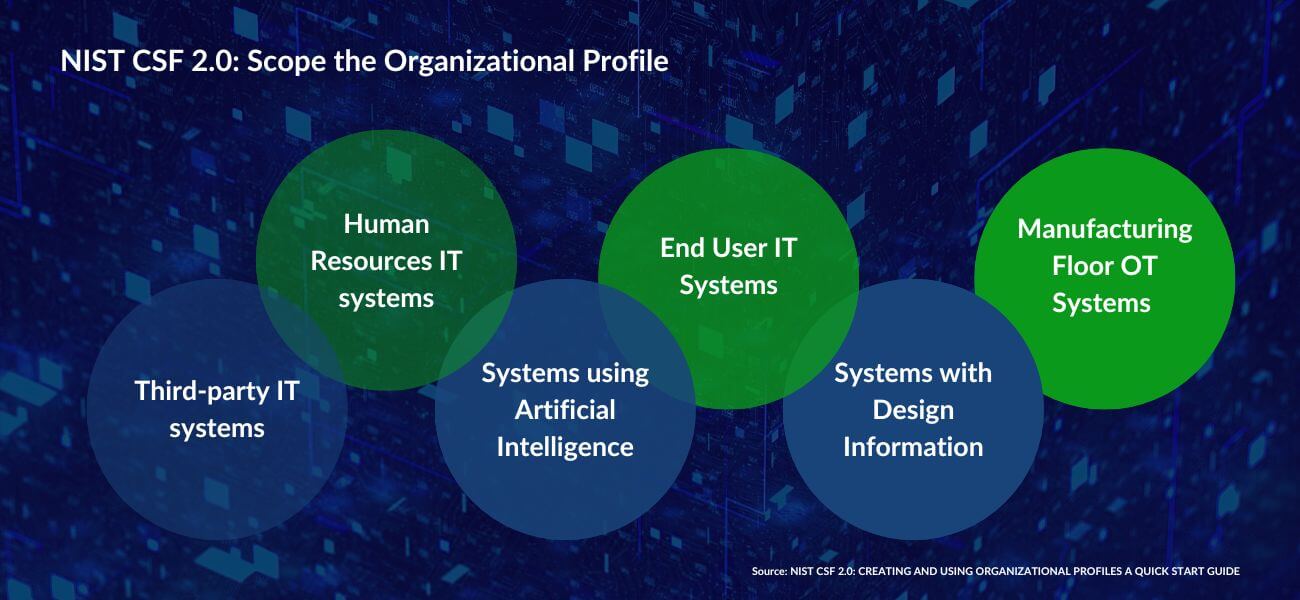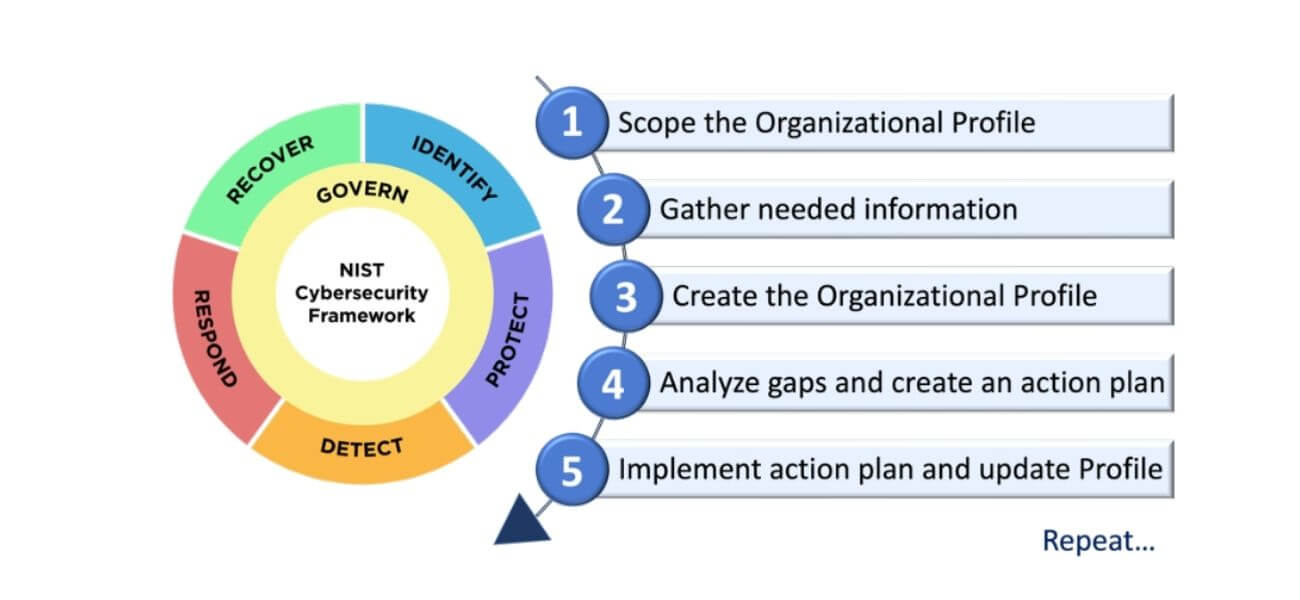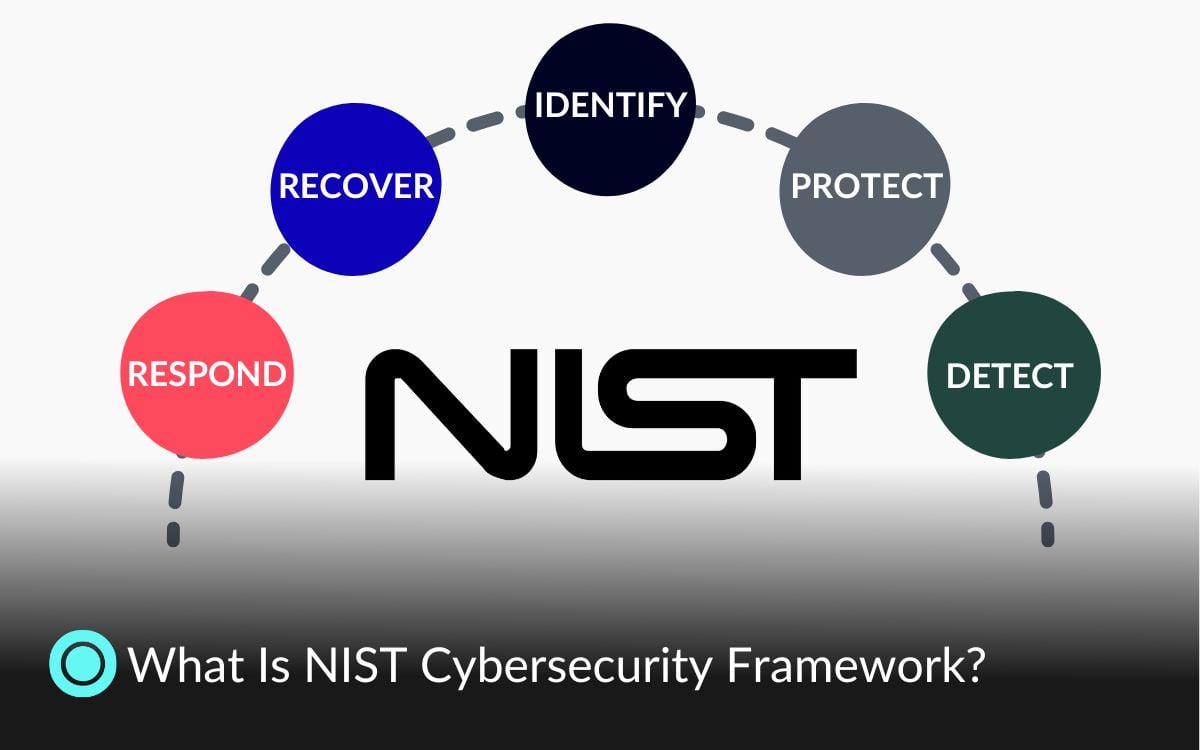Key Takeaways:
- The NIST Cybersecurity Framework offers a structured approach to managing cybersecurity risks applicable to various sectors and organizations of all sizes. It emphasizes five key functions Identify, Protect, Detect, Respond, and Recover to help organizations establish a comprehensive cybersecurity strategy.
- Implementing the NIST framework can lead to improved communication and collaboration within and across organizations, enhancing overall cybersecurity measures.
- While NIST is based in the US, its cybersecurity standards are globally accepted, supporting international cooperation and compliance.
- Success stories, like those of the Japanese Cross-Sector Forum and Saudi Aramco, demonstrate the framework's effectiveness in unifying diverse security practices and strengthening cybersecurity postures internationally.
What is the NIST cybersecurity framework?
The National Institute of Standards and Technology (NIST), specifically in the context of the United States, is an institution that develops cybersecurity standards, guidelines, best practices, and other resources covering all critical infrastructures, from federal institutions to smart power grids and electronic health records, from advanced nanomaterials to computer chips, with the mission of meeting public needs.
The goal of NIST is to produce stronger and more efficient solutions by addressing the core problems faced by U.S. resources, determining the priorities of U.S. industry and the public and collaborating with stakeholders.
According to the information available on the official website, the priority areas in which NIST has contributed and plans to focus more include cryptography, education and workforce, emerging technologies, risk management, identity and access management, measurements, privacy, trustworthy networks, and trusted platforms.

For a more detailed explanation, you can review the information sheet published by NIST.
In addition to all this, I can say that for companies operating in Europe, it is necessary to follow the latest decisions taken in the EU and the European Cybersecurity Act, with the CRA being the main determinant in the standards to be followed. So,why should you be informed about NIST?
Why NIST?
Q: Why should IT-related companies operating in Europe be knowledgeable about NIST?
Imagine you're running an IT company in Europe, maybe in Berlin or Zurich. You've got clients all over, and everyone is buzzing about data security. This is where NIST (National Institute of Standards and Technology) comes in, and here's why it's worth knowing about.
- Speaking the Global Language of Security: Imagine playing the same video game with friends around the world but with different rules it’d be a mess, right? That’s why NIST is like the universal rulebook for security standards. Whether you’re in Stuttgart or Seattle, these rules help everyone play the game right, keeping all our digital secrets safe.
- Helping with GDPR: You know how schools have rules to keep everyone safe and happy? Well, the European Union has something similar called GDPR that keeps our personal information private and secure. NIST is like a helpful guidebook that shows companies the best way to follow these rules, so they don’t get into trouble.
- Teaming Up Across Borders: Think of working on a school project with friends in different countries. To make it smooth, you’d all need to agree on how to share and protect your work. That’s where NIST comes in—it helps companies in Europe work seamlessly with others across the globe, ensuring everyone’s on the same page with security.
- Staying Ahead with Tech: NIST is like your guide to the latest tech and how to use it safely. If you’re building new software or services, NIST’s guidelines help you avoid pitfalls and keep things secure. It’s like having a tech-savvy friend who always has the best advice.
- Gaining a Competitive Edge: Sticking to NIST standards can make your company look really good. Clients and partners love working with companies that are serious about security. It’s a bit like getting a gold star for being reliable and trustworthy.
I know how tricky all this tech stuff can be. That’s why I’m here to help guide European IT companies through the maze of NIST standards. I want to make sure you’re not just following the rules but leading the way in innovation and security. So, whether you're a startup in Frankfurt or an established tech giant in Zurich, getting to grips with NIST could be your secret weapon for success.
Summary of NIST Cybersecurity Framework (CSF) 2.0
The NIST Cybersecurity Framework 2.0 is designed to help organizations of all types and sizes manage cybersecurity risks. It outlines a flexible approach to achieving high-level cybersecurity outcomes without mandating specific requirements. Instead, it provides links to additional resources for further guidance.
NIST framework cybersecurity is a tool for organizations to structure and refine their cybersecurity practices systematically.

Tips for IT Companies and Managers
1- Getting to Know the Playbook – The NIST CSF:
- Dive Into the Details: Just like learning a new game, get to know the NIST CSF inside out. This isn't just any playbook; it's the one that can really set your company apart in cities like Berlin or Munich.
- What's Your Role?: See how each part of this framework makes your team stronger and your data safer.
2- Scouting and Training – Handling Risks and Keeping Everyone Alert
- Check Your Defenses: Regularly check how well your company is protected against cyberattacks. It’s like checking your soccer net for any holes before the game starts.
- Spot the Gaps: Keep an eye out for any weak spots places where a cyber-threat could sneak through
3- Keeping Skills Sharp – Ongoing Training and Updates
- Train Like a Pro: Keep your team sharp with regular cybersecurity training, just like soccer practice.
- Stay Ahead of the Game: Always be ready for new tricks and tactics that hackers might use.
4- Game Time – Responding to Incidents
- Have a Game Plan: When threats strike, know exactly what moves to make to block them, just like a goalie knows how to dive for the ball.
- Practice Makes Perfect: Keep testing and improving your game plan, so when the big challenges come, you’re ready to stop them.
5- Talking Tactics – Keeping Communication Open
- Talk it Out: Always keep your team in the loop, just like a goalie shouting updates to their teammates.
- Share Fast: If something happens, spread the word fast and accurately, so everyone knows what's going on.
Success Stories
1- Japanese Cross-Sector Forum
The Japanese Cross-Sector Forum is a collaborative platform established in 2015 by 44 companies, including major corporations like Toyota, Mitsubishi, Sony, and Panasonic, with the aim of training, hiring, and developing cybersecurity professionals.
In addition to monthly general meetings, the forum organizes an annual conference for C-level executives and involves the government in cybersecurity discussions.As a result of these efforts, tools such as talent definitions, outsourcing guidelines, and a CISO calendar have been developed. This intensive interaction with the government contributes to the forum’s development of cybersecurity strategies that are aligned with policies and kept up to date.
Before NIST:
Before adopting the NIST Cybersecurity Framework, the forum lacked a common language and standards due to sectoral differences. This made it difficult to develop coordinated and effective solutions in the field of cybersecurity.
After NIST:
Since the NIST Cybersecurity Framework is globally applied, it has helped the Cross-Sector Forum have a shared language among different industry sectors and facilitated our comprehensive discussions between member companies in Japan and their subsidiaries outside Japan.
- Koji Ueno, Chairperson
The NIST Framework, with its cross-sectoral structure, provided forum members with a common language and standards. As a result, better communication and collaboration were achieved among members. The forum made significant progress in cybersecurity by establishing working groups focused on monthly meetings, workforce development, information sharing, and academic collaboration. This transformation enabled companies to implement more effective cybersecurity measures both internally and internationally.
This success story demonstrates how NIST can bring together different sectors toward a common goal and drive transformation in the field of cybersecurity.
2- Saudi Aramco:
Saudi Aramco, as one of the world's largest oil companies, is a giant in the energy sector. The company's mission is to produce and distribute energy resources in a secure and sustainable manner. However, this great responsibility also brings high-security risks. Saudi Aramco follows a comprehensive strategy to minimize these risks and maintain its cybersecurity at the highest level.
Before NIST:
Due to its massive operations and global activities, Saudi Aramco faced difficulties in overcoming the challenges in cybersecurity. The company needed a strong and integrated security framework to protect its operations.The variable security standards used in different regions and various business units made effective security management difficult.
After NIST:
With the adoption of the NIST Cybersecurity Framework, Saudi Aramco experienced fundamental changes in its way of working. NIST enabled the company to unify its cybersecurity strategies under one umbrella. As a result, the security standards of different business units around the world were harmonized.

The NIST Framework helped Saudi Aramco to better assess and prioritize cybersecurity risks. The company can now manage risks more effectively and quickly identify and close security gaps. The common language and standards provided by NIST have enabled the company to communicate more effectively with both internal and external stakeholders. This has allowed Saudi Aramco to strengthen its cybersecurity practices on a global scale.
This transformation of Saudi Aramco is an important success story that demonstrates how effective and flexible a solution NIST offers in the field of cybersecurity. This story serves as an inspiring example for other companies operating in the energy sector.
3- Israel National Cyber Directorate Version 2.0
The Israel National Cyber Directorate (INCD) is an organization responsible for ensuring the country’s cybersecurity and aims to establish a strong defense line against cyber threats. INCD works to protect the nation’s critical infrastructure, increase cybersecurity awareness, and develop a coordinated response to cyber threats. In fulfilling this mission, it closely collaborates with the government, private sector, and academia.
Before NIST:
INCD faced challenges due to the diversity of data and security standards from different sectors. The use of different security protocols in each sector made information sharing and quick response to threats difficult. INCD needed a common language and standards to create a consistent and effective strategy in cybersecurity.
After NIST:
With the adoption of the NIST Cybersecurity Framework, the way INCD operates changed significantly. NIST guided INCD in integrating cybersecurity strategies and creating a common language among different sectors. As a result, the processes of data security and threat detection among sectors were harmonized.
The NIST Framework made INCD more proactive against cyber threats. Now, organizations in different sectors can respond to cyber threats more quickly and effectively. This transformation allowed INCD to respond more rapidly to cybersecurity incidents and develop national cybersecurity strategies. Additionally, the common language provided by the NIST Framework strengthened INCD's international collaborations and facilitated its integration into global cybersecurity networks.
INCD’s transformation serves as an inspiring example for other countries seeking to lead in cybersecurity. Alongside these examples,we can also better understand the purpose behind the European Cybersecurity Act.
Featured Source:
Ensuring a Secure Digital Future with the EU Cybersecurity Act
Conclusion
Cybersecurity is not just a technological issue; it is also a matter of strategic management. As I have mentioned in previous blogs, businesses and institutions must be proactive against threats and create a cybersecurity culture that permeates the entire organization. This approach not only reduces existing cyber risks but also increases resilience against potential future threats.
However, this strategy should not be adopted solely at the corporate level; it must also be embraced by governments. Governments need to establish a common language and standards, bringing different sectors together towards a common goal. This can lead to a significant transformation in the field of cybersecurity.
Internationally recognized standards such as the NIST Cybersecurity Framework enable the establishment of a consistent language and common goals across sectors, thereby facilitating more effective cybersecurity management. Such frameworks help to foster more effective communication among both internal and external stakeholders. By adopting these standards, governments should take the necessary steps to protect critical infrastructures, ensure national security, and build a stronger defense line against global cyber threats. As a result, security and resilience will be enhanced both nationally and internationally, reinforcing the overall safety of society.





